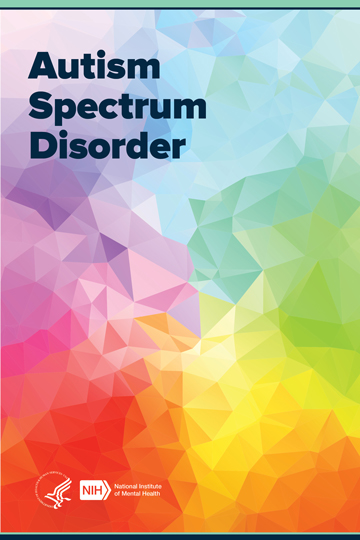Cutting-edge Therapies and Therapies: Advancements in Autism Study
Comprehending Autism: A Comprehensive Guide to Signs And Symptoms and indications
Autism Spectrum Condition (ASD) incorporates a wide range of features that can dramatically impact an individual's social interactions and everyday functioning. Recognizing these subtleties not just help caregivers and teachers in supplying ideal assistance yet also fosters a more inclusive environment for individuals with ASD.
Overview of Autism Spectrum Disorder
Defining Autism Spectrum Disorder (ASD) involves identifying it as a complex neurodevelopmental problem identified by an array of obstacles in social communication, communication, and behavior patterns. The term "spectrum" shows the vast irregularity in signs and symptoms and their extent, which can vary dramatically from one person to an additional. ASD commonly shows up in very early youth, although some individuals may not obtain a medical diagnosis up until later on in life.
Aspects influencing the development of ASD consist of hereditary tendencies and environmental factors, although the exact reasons stay under investigation. Diagnosis usually depends on behavioral assessments, as there are no clear-cut medical examinations for ASD. Early treatment is vital and can substantially improve end results, concentrating on enhancing interaction skills, social communications, and adaptive behaviors.
Individuals with ASD might likewise exhibit special strengths, such as remarkable focus to detail or specific locations of competence. Understanding the multifaceted nature of ASD is crucial for promoting an inclusive atmosphere that suits neurodiversity. Continued study is important for creating effective treatments and support group, enabling people with ASD to prosper and fulfill their prospective within culture.
Common Indicators of Autism
Recognizing the typical indicators of Autism Spectrum Disorder (ASD) is essential for early identification and treatment. These signs can vary commonly in extent and presentation, however particular characteristics are regularly observed in individuals with ASD.
One of the most prevalent signs is a marked difficulty in establishing and maintaining eye get in touch with. People might likewise show limited rate of interest in social interactions and reveal a choice for singular play.
Sensory level of sensitivities are additionally usual; people might panic or underreact to sensory stimuli, such as sounds, lights, or textures. autism. Language advancement can be atypical, with some children showing delayed speech or using language in uncommon means, including echolalia-- repeating expressions or sentences heard elsewhere
It is necessary to note that not every person with ASD will present all these indicators, and the degree of these behaviors can vary substantially. Early recognition allows for prompt support and sources, improving the top quality of life for those on the range.
Social Communication Obstacles
Social interaction challenges are a characteristic of Autism Spectrum Disorder (ASD), influencing an individual's capacity to engage effectively with others. These problems can manifest in numerous methods, consisting of difficulties in launching and preserving conversations, comprehending social cues, and reacting appropriately in social communications.
Individuals with ASD might fight with nonverbal interaction, such as eye contact, faces, and body language. This can cause misunderstandings, as their communicative intent may not be appropriately translated by others. Additionally, they might discover it hard to understand the subtleties of tone and context, which are important for efficient interaction.
In group setups, people with ASD may feel overloaded and might not know how to sign up with in discussions (autism). They could additionally display irregular conversational patterns, such as monologuing concerning particular rate of interests without identifying social reciprocity
Furthermore, these difficulties can cause social seclusion or difficulties in developing connections, as peers might misinterpret their behavior or communication style. Understanding these social communication difficulties is vital for cultivating supportive atmospheres that advertise social abilities this website growth and boost the top quality of interactions for individuals on the autism spectrum.
Sensory Sensitivities and Reactions
Numerous people with Autism Spectrum Condition (ASD) experience heightened sensory level of sensitivities that can dramatically impact their daily lives. An individual with ASD may find everyday noises, such as a vacuum cleanser or crowded settings, overwhelmingly traumatic, leading to stress and anxiety or crises.
Sensory handling differences in individuals with ASD can likewise influence their capability to take part in social interactions and routine tasks. A child who is sensitive to touch may withstand physical affection or stay clear of certain apparel fabrics. A choice for specific appearances or preferences can restrict nutritional choices and develop challenges throughout mealtimes.
Comprehending these sensory level of sensitivities is necessary for identifying the one-of-a-kind experiences of individuals with ASD. Awareness of their sensory profiles can foster much better interaction and support strategies, developing an atmosphere that fits their demands and enhances their high quality of life. Ultimately, recognizing sensory level of sensitivities is an important element of comprehending the more comprehensive range of autism.

Sustaining Individuals With Autism
Effective support for individuals with Autism Spectrum Condition (ASD) is important for improving their total wellness and fostering independence. Support methods need to be tailored to satisfy the unique demands of each individual, considering their staminas and challenges.

Social skills training can additionally play an essential role. autism. Engaging people in group activities or role-playing scenarios can boost their ability to browse social interactions. Additionally, it is important to educate family members, caregivers, and peers concerning ASD to cultivate a inclusive and supportive area
Conclusion
In conclusion, a thorough understanding of Autism Spectrum Condition is vital for acknowledging its symptoms and signs. Early recognition of typical features, such as social interaction difficulties and sensory sensitivities, makes it possible for instructors and caretakers to carry out effective treatments. By cultivating enhanced communication and social skills, people with autism can navigate their settings more successfully. Eventually, raised recognition and support can dramatically enhance the lifestyle for those impacted by ASD.
Autism Range Condition (ASD) incorporates a vast variety of qualities that can anonymous considerably affect an individual's social communications and day-to-day functioning.Individuals with ASD might battle with nonverbal communication, such as eye get in touch with, facial expressions, and body language.Numerous people with Autism Range Condition (ASD) experience enhanced sensory level of sensitivities that can dramatically impact their daily lives.Sensory processing differences in people with ASD can additionally influence their capacity to involve in social interactions and routine tasks.Comprehending these sensory level of sensitivities is crucial for recognizing the unique experiences of people with ASD.